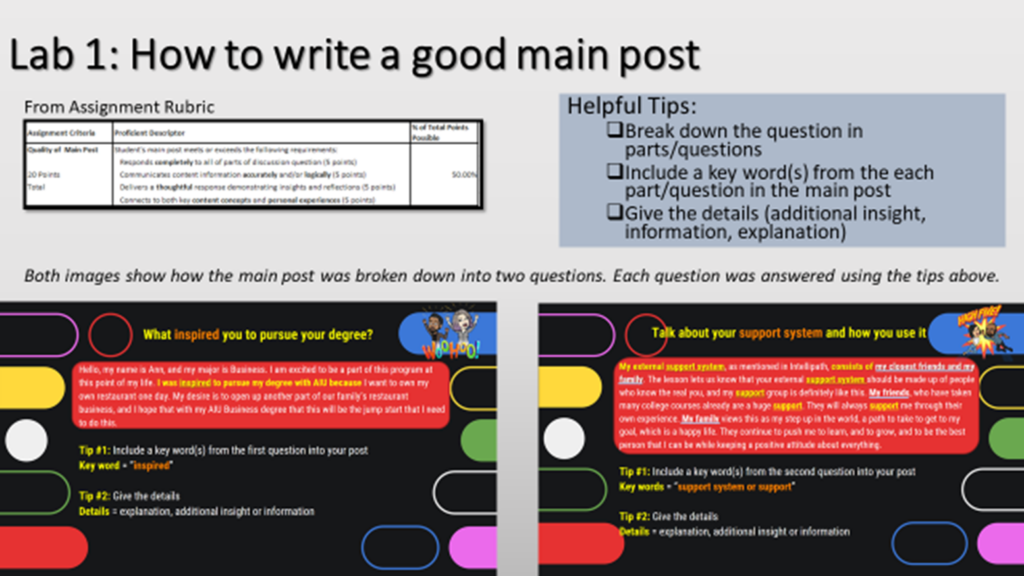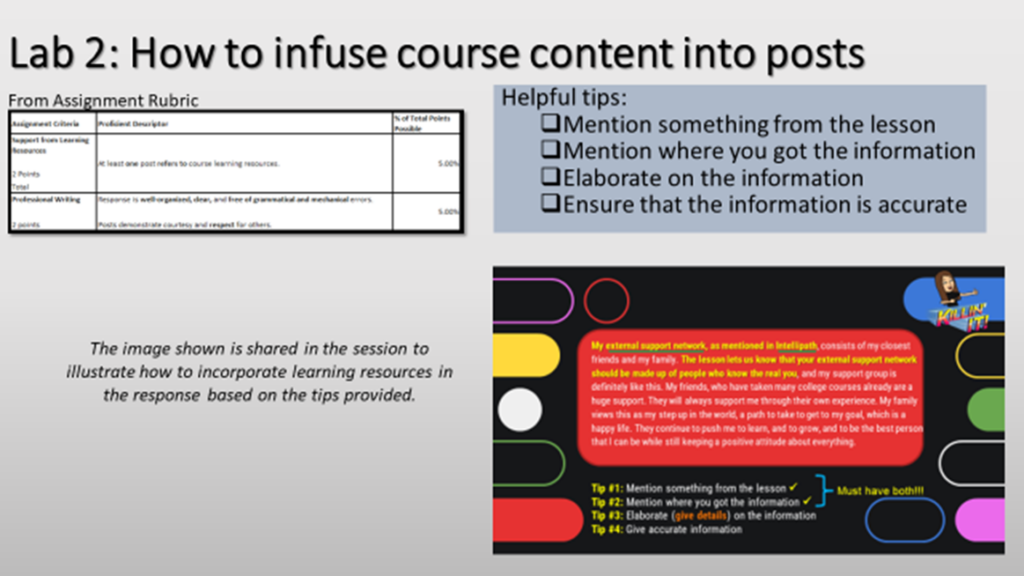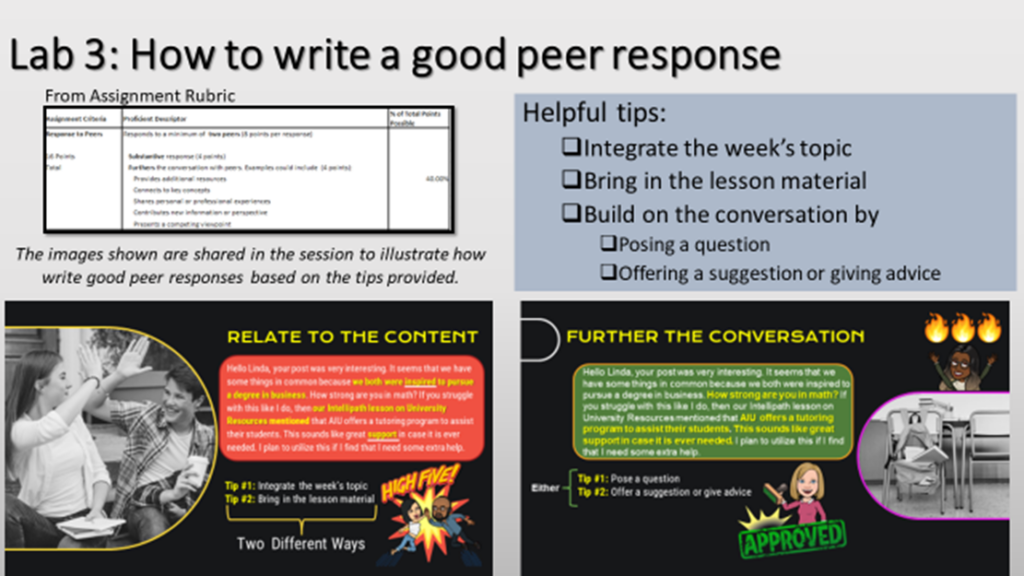Discussion is one of the biggest challenges for online students, and poor discussion is one of the biggest complaints among online faculty. Student responses are often perfunctory, lacking the depth the instructor desires. But rather than laziness, poor discussion often results from students not knowing what makes for a quality discussion post. That uncertainty leads to student replies that are shallow, off topic, or restatements of other posts.
The solution is to provide training in online discussion, something that is usually absent from online programs. We have filled this void with three live, 30-minute virtual labs for our first-year experience students. These provide a walkthrough of how to read, review, and create responses to discussion board questions. We offer them during the first week of the course so that we can use actual course discussion prompts as examples; the labs are hosted by each student’s instructor so that the instructor can track student improvement throughout the course.
An important component of these labs is modeling good discussion posts. Students also learn how to use the grading rubric to guide their discussion board responses. We created a discussion board lab for each of the key components of the grading rubric. Each begins with the instructor reviewing the discussion board prompt with the class and guiding students though the process of responding to it.
Lab 1: How to write a good main post
The goal of this session is to help students understand how to read the question and develop a strategy to respond completely and comprehensively. During the session, the instructor references the grading rubric to outline the requirements for the response and then helps the students develop responses to the main question. The instructor teaches the students to identify key words from the question and how to incorporate these into their responses.

Lab 2: How to infuse course content into posts
The goal of this session is to teach students how to reference and cite sources. While the course does not have specific citation expectations, students must note and incorporate course content in their response. The instructor provides examples of how to integrate course content into the response and how to elaborate on this reference to demonstrate learning.

Lab 3: How to write a good peer response
The goal of this final lab session is to aid students in developing substantive peer responses that further discussion. The session begins with the instructor going over the grading rubric to provide guidance regarding response requirements. The instructor then uses examples to model substantive responses that build upon the post and keep the discussion aligned with the course content. The instructor also provides practical strategies on how to align a response to the discussion prompt, reference learning content, pose follow-up questions, and offer suggestions or insights to other students.

Reinforcement
Instructors make note of which students attend the voluntary sessions and any improvements in their discussion board writing over the course of the semester. Instructors also recognize students’ improvements in their feedback, especially for students who attended the sessions. Through the discussion board labs and as reinforced in instructor feedback, students demonstrate increased confidence and competence in responding to the discussion board prompts as the semester progresses.
Student feedback shows that they have overwhelmingly found the labs beneficial and left them no longer intimidated to engage with their peers in discussion forums. This simple intervention during the first course of students’ studies provides important skills that help them succeed across their programs.
Marva Brewington, PhD is an assistant professor and Anna Charisse Selga, MBA, is the online program chair of General Education—New Student Experience at American InterContinental University.






